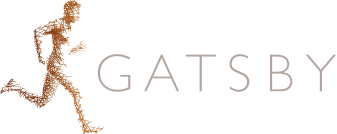EMMA STEELE, HEAD OF SIXTH FORM AND CAREERS LEADER, AND CHAIR OF THE NORTH EAST SEND CAREERS WORKING GROUP
Cleaswell Hill School is based in South East Northumberland. Our students have a variety of complex needs and disabilities and are grouped in classes according to their social and academic ability, as well as their level of need and future pathway. We also support children to overcome the barriers that have affected their progress in the past. Our goal is for each student to aim for the highest levels of independence.

A student from Cleaswell Hill School taking part in work experience at Disability North
Students are given life chances through a variety of pathways incorporating functional development, life skills and vocational learning. Within our school context a ‘career’ is defined as a pathway through life. Career guidance for us includes independent living skills, community inclusion and students’ understanding of postschool options, with support and advice through creative careers education and work-related learning. Students have the option to choose a number of pathways through and out of school.
Our school adopted the Gatsby Benchmarks following a Northumberland careers meeting. They have given us a robust way to structure a well-balanced and personalised careers programme, enabling us to increase opportunities and allowing us to monitor its quality and effectiveness. Since they were first introduced to us we have come a long way. It has taken us three years to achieve the Benchmarks in full, but this is an ongoing process that requires flexibility, especially as careers programmes need to adapt to the changing cohort of students every year.
UNDERSTANDING THE LOCAL CONTEXT
In the county of Northumberland, the most densely populated and economically active area is the South East, but it also has the greatest levels of unemployment, poverty and deprivation. We are therefore very aware of the importance of creating a culture of high aspirations. All young people deserve to be encouraged to aim high, and students with Special Educational Needs and Disabilities (SEND) are no different. We concentrate on what our students can do, and the experiences they can access, in order to build their skills so they can reach their future goals.
Communicating the Benchmarks to all staff, so everyone understood the framework, was undoubtedly the most important part of planning our careers programme. Auditing our existing activity was also a great starting point. It helped us realise that we did more than we initially thought, but also highlighted opportunities for us to improve in key areas.
To reach Benchmark 2: Learning from Career and Labour Market Information we needed to understand our local area and all the opportunities it affords for our students. We therefore sought information from external sources, including the North East Local Enterprise Partnership (NE LEP), which helped us to identify industries with high volumes of employment in the area. We could then use this information to shape our curriculum offer – for example, we now offer taster courses in subjects such as Health and Social Care, which are relevant to major local industries.
We have found that learners are a lot more inclined to explore alternative career options if they know there are job opportunities available locally.
Building a network of local employers has also supported us in all aspects of the Benchmarks, but has taken a long time to establish. The key to developing these relationships was communication – don’t be scared to just ask! It is important to establish what employers can offer the school and students, but also what the school and students can offer the employer. To create a long-lasting partnership, it needs to be mutually beneficial.
EMBEDDING CAREERS IN THE CURRICULUM
The Benchmarks emphasise the importance of embedding career guidance throughout a student’s time at school. Each of our students is therefore given a range of career-related opportunities throughout the curriculum that are tailored to their needs and ambitions. Careers are linked into the curriculum across all subjects through many different activities, including industry visits, role-play and research. As students progress through the school, and move closer to the world of work, their curriculum changes, for example the emphasis on functional skills in maths and English lessons increases.
We have also spent time focussing on specific activities relating to Science, Technology, Engineering and Mathematics (STEM) careers. We have found the STEM Learning online resource library particularly useful. Exploring these resources with students has helped them develop their basic science skills, such as understanding ‘cause and effect’, as well as highlighting progression opportunities, for instance Level 3 engineering courses. Our focus on STEM has also led us to develop university partners – this has increased opportunities for the students, including taking part in engineering workshops with Newcastle University. To achieve Benchmark 4: Linking Curriculum Learning to Careers, all our teaching staff take part in training which promotes success stories from previous years. Making sure that every teacher shares their work with the wider teaching team helps us coordinate activity and fully meet this Benchmark.
MEETING CHALLENGES CREATIVELY
We would encourage any school starting out on their journey with the Benchmarks to use their knowledge and experience of SEND to develop a programme that meets the needs of their students. There is not a ‘one size fits all’ approach. For us this meant thinking broadly about Benchmark 7: Encounters with Further and Higher Education. All of our students now visit educational facilities which are appropriate to their chosen future pathways such as day centres, volunteer organisations, further education colleges or universities. Our next step is to look towards the younger phases within school and how we can ensure that we are preparing students, parents and all other stakeholders in the best possible way for their future.


